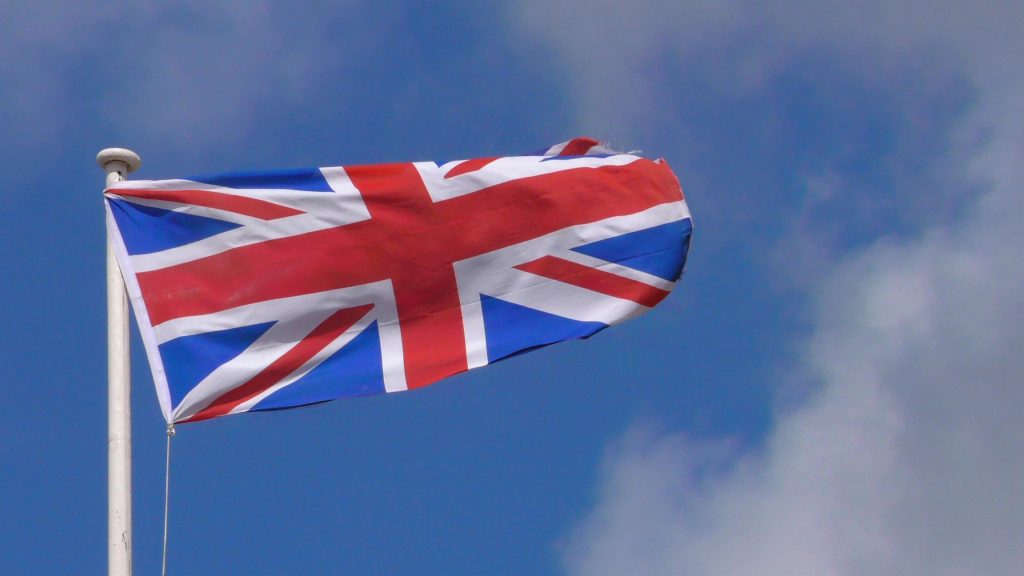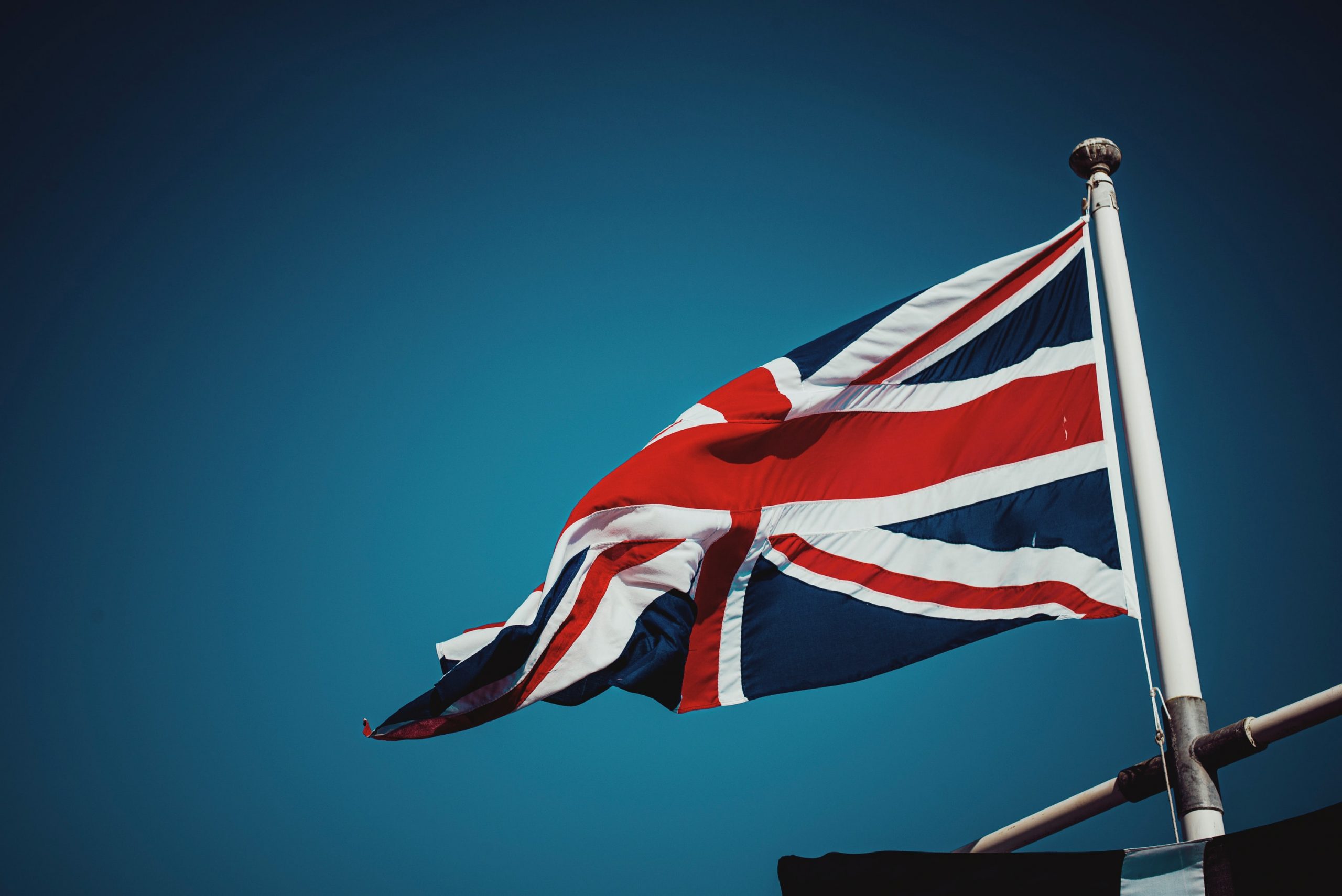Table of Contents
Before it took its current form and name as the Union Jack, the UK flag was simply known as The Flag of Britain or The British Flag in the 16th century. Before we get into why the UK’s flag is called the Union Jack, let’s first get to know the UK as a country. England, Scotland, Wales, and Northern Ireland are the four countries that make up the United Kingdom. As a result, the country would require a flag that best represents its four countries. Australia, New Zealand, Tuvalu, and Fiji (although Fiji is a republic, unlike Australia and New Zealand) are the four nations’ flag with Union Jack as part of their respective national flags. With that in mind, let’s look at how the country’s current flag combines three older national flags: St George’s Red Cross of the Kingdom of England, St Andrew’s White Saltire of Scotland, and St Patrick’s Red Saltire of Ireland.
The flag of the United Kingdom dates back to 1606 when James VI united England and Scotland. When mounted on a warship and not in port, the British flag became officially known as the ‘Union Jack’ around the year 1674. On land, the British flag was referred to as the ‘UK Union flag’ around the same time. As a result, depending on if you were on land or in the water, the flag was referred to by two different names. The rule by the early nineteenth century was to simply use the sailing term and call it the Union Jack. But where did the two halves of the name come from? Let’s dive it!

Union
If you imagine the original flags of Ireland, Scotland, and England one above the other, you’ll see the UK’s current flag vividly and clearly representing their unity. The name Union first appeared in print in 1625. There are several theories as to how it came to be known as the “Union Jack.” The Union part is fairly straightforward, but what about Jack? Here’s an idea!
Jack
Before the 17th century, the term “Jack” was used to describe the maritime bowsprit flag, and when warships mounted the UK flag on the front, it was referred to as “the Jack.” When King George named the new UK Union Flag in 1801, the powerful Royal Navy referred to it as the Union Jack, and the name stuck. Therefore, the union jack or union flag is the United Kingdom’s national flag.
Evolution Of The Jack
When mounted on a warship and not in port, the British flag became formally known as the ‘Union Jack’ around 1674. On land, the British flag was referred to as the ‘Union flag’ at the same time. By the early nineteenth century, this rule had been relaxed, and the sailing term could refer to the national flag anywhere. In 1801 the Union Jack was modified to include the St. Patrick’s Cross (Ireland). And if you’re wondering why the Welsh flag was never included in the Union Jack, it’s because Wales had already become a principality of England by 1801.
Flags In Whales
There are two flags flying in Wales: the red dragon on a green background and the yellow St Davids Cross.
What Do The Colours And Crosses On The Union Jack Represent?
The Union Jack is made up of three heraldic crosses: England’s Saint George’s Cross, Scotland’s Saint Andrew’s Cross, and Ireland’s Saint Patrick’s Cross. The layout of the flag has changed since the first Union Flag, as it was initially known, was created in 1606. The first Union Flag featured only England’s red cross of Saint George on a white background and Scotland’s white diagonal cross on a blue background. However, because it is forbidden to have red on a blue background, the red cross had to be bordered with white, according to Herald. Saint Patrick’s Cross, represented by the diagonal red cross on a white background, was not added to the flag until Ireland became a part of the United Kingdom in 1801.
When Is The Union Jack Flag Flown?
The Union Flag was initially recognised as a Royal Flag. When the current design was approved in 1801, it was ordered to be flown solely on the King’s forts and castles. On Royal Family birthdays, Commonwealth Day, Coronation Day, The Queen’s official birthday, Remembrance Day, and the days of the State Opening and Prorogation of Parliament, government buildings must fly the Union Jack flag.
Here are a few things you should be aware of and watch out for after learning about the Union Jack and its origins.
Union Jack Upside-Down
Be cautious when hanging the flag because doing so in an offensive manner is frowned upon! It might also be a distress sign, indicating that something is off. Therefore, always check that the white cross is positioned at the bottom of the red line in the top-left corner.
English Flag vs. British Flag
England is a province of Great Britain, and Great Britain is a province of the United Kingdom. England’s flag is known as the St. George’s Cross, while flags of great britain is known as the Union Flag or the Union Jack, as previously explained.
FAQs
1. What is the difference between the Union Jack and the British flag?
The British flag was referred to as the “Union flag” around the same time. As a result, depending on whether you were on land or in the water, the flag was known by two different names. By the early nineteenth century, the rule was to certainly use the sailing term and call it the Union Jack.
2. Why is Wales not in the UK flag?
The Welsh dragon does not appear on the flag because Wales had already been united with England since the 13th century when the first Union Flag was created in 1606. This meant that Wales was a Principality rather than a Kingdom and thus could not be included.
3. What was the British flag before the Union Jack?
The flag of Great Britain, also known as King’s Colours, the first Union Flag, the Union Jack, or the British flag, was used at sea from 1606 and more broadly from 1707 to 1801. It was the first British flag. It is the forerunner to the Union Jack of 1801.
4. What is the union jack right way up?
The Union Flag has a right way up – on the side of the flag nearest the flagpole, the bigger diagonal white stripe must be above the red diagonal stripe, since Scotland’s St Andrew’s Cross takes precedence over Ireland’s St Patrick’s Cross. The flag should never be flown upside down.
5. Why is Wales not on the union jack?
The Welsh dragon is not shown on the Union Flag. This is due to the fact that by the time the first Union Flag was designed in 1606, the Principality of Wales had already been merged with England and was no longer an independent principality.
We hope that you have enjoyed reading our blog on ‘why the UK’s flag is called the Union Jack’. You can also read some of our blogs:











0 Comments